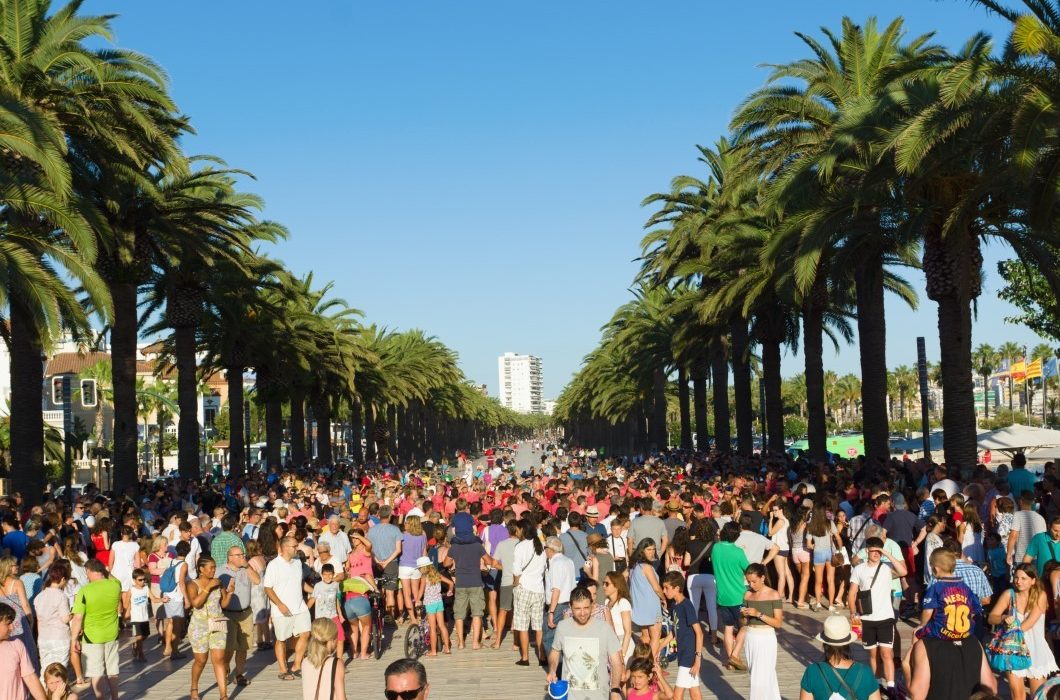
You might also like:
Many cities in the world have crossed the 10 million mark in tourist arrivals, and in some of them, this large number has caused coexistence difficulties between visitors and local citizens. A recent study “Future of Tourism, Planning or Massification”, conducted by the Nebrija University and Spain Tourism Board, attempts to answer the question of whether a ceiling in tourism growth should be set in Spain. Tourism planning seems to be the biggest problem of the country now.
The research explains that the “tourism-phobia” phenomenon has been unleashed in some destinations and its causes are more attached to the lack of proper planning in the tourism industry, than the sector’s growth rate.
The authors of the research stress the need for more regulations and active tourism planning as the inflow of visitors continues to grow in Spain, in order to face the repercussions of the high influx of tourists in some popular destinations that have already impacted the social, cultural and environmental structures.
“In Spain there aren’t too many tourists, but the country is lacking tourism planning,” says Professor Manuel Figuerola, director of the study, in response to those who believe that it is necessary to “set a ceiling” on the industry’s growth.
This research conducted by the Tourism Board and the Nebrija University identifies massification of tourist destinations as a trigger of critical and hostile behaviors of locals regarding tourist arrivals. This is the result of the citizens believing their rights are set aside because attracting a larger number of tourists has become a priority. In addition, the general perception of the citizens is that the benefits and gains derived from tourism do not have an adequate social distribution, which causes even more discontent and rejection.
In 2017, Spain registered a record number of 82 million visitors and the upward trend of this sector continues. 15 municipalities in Spain account for nearly 40% of all tourist demand, including local tourists. However, from the economic perspective, the study finds no reason to support the rejection of the tourism growth in Spain or its intensity in the different sectors, due to the fact that tourism sees revenues for the country with a percentage higher than 10% in the GDP (in 2017, it was exactly 11.5%).

The study concluded that rejection of mass tourism has more to do with specific matters, such as tax increases in prices for goods and services that, directly or indirectly, end up having an impact on the locals. Particularly, the study highlights the soaring prices of accommodations and rentals, as well as the possibility of disrupting behavioral models and local coexistence.
The results of this study also take into account the tourist pressure indicators on the territory and the local population in 22 cities and urban areas around the world, set apart by their high tourist influx. The ranking was taken from the Global Destination Cities Index 2016 of MasterCard Worldwide.
The comparison shows how Paris, capital of the world’s second largest destination for international tourism, receives 18 million foreign arrivals every year, with a population density close to 21,000 inhabitants per square kilometer, with no signs of criticism, rejection or protests against mass tourism. In contrast, locals in some neighborhoods of Barcelona have expressed their rejection of mass tourism, when Ciudad Condal receives 8.2 million foreign arrivals (less than half of the numbers reported in Paris), with a population density of 16,000 inhabitants per square kilometer.
The premise of this study argues that negativity and protests against mass tourism in Barcelona could be explained by a trend, a direct result of higher social concerns, such as an increase in taxes and biased political orientations that support the hypothesis that true economic and social development is only possible with high growth rates in the industry sectors, and not in tourism.
The study is adamant about the fact that many cities in the world have already reached numbers as high as 10 million arrivals per year, which has caused disturbances and coexistence problems between visitors and locals. But not all cities have reacted to mass tourism with a wave of “tourism-phobia”, and this more welcoming approach has been possible due to tourism planning in each destination. “The issues of rejecting the growth of tourism are due to the lack of adequate and strategic tourism planning, rather than the intensity of tourist arrivals,” concludes Professor Figuerola.
Source: tourism-review.com
